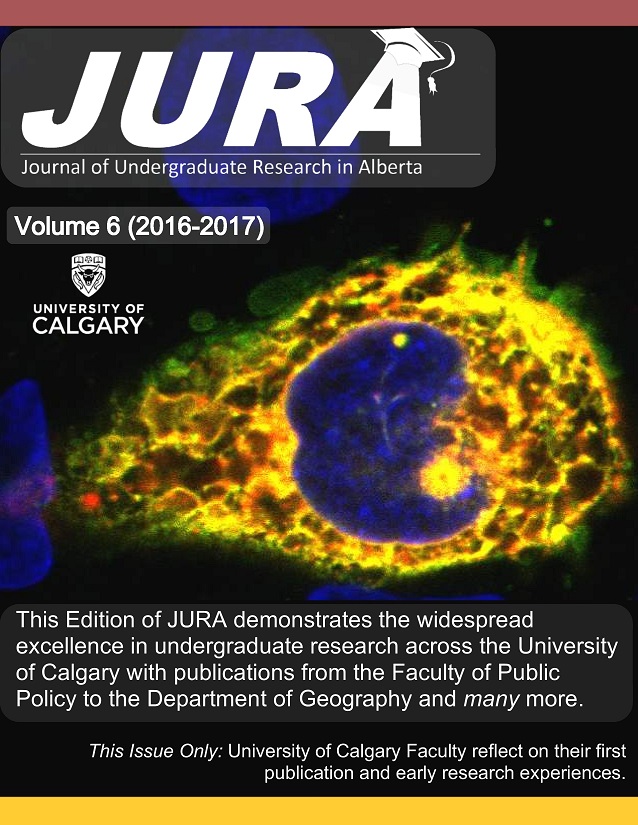Mechanics of Sarcomeres in Series and Instability - JURA Best Paper Award 2016-2017
Keywords:
Sarcomere, Myofibril, Force-length Relationship, Descending-Limb Region, Instability, ModelAbstract
Sarcomeres are the smallest independent unit of force production in the muscle. Current theoretical models of sarcomere in series, i.e. a myofibril, predict instability on the descending limb region of the force-length relationship. However, experimental evidence suggests that sarcomeres can be stable on the descending limb region with non-uniform lengths. The models presented re-evaluates the assumption that sarcomeres are independent units of contraction. Instead, it is hypothesized that there is a dependency between sarcomeres for force generation. Sarcomeres in series were modelled, with force as the dependent variable and sarcomere length and time as the independent variables. Models were developed with both independent and dependent sarcomere force generation. The independent sarcomere models resulted in instability that current theoretical models predict. Two cases of dependent sarcomere models were implemented, both included a shift in the passive force with varying degrees of dependency between adjacent sarcomeres. With these models, there was either stability with non-uniform length, stability with uniform length, or instability on the descending limb region of the force-length relationship. The major finding was that mathematically, sarcomeres with a variable passive force can reach equilibrium at various lengths if a dependency between adjacent sarcomeres is incorporated into the models.
Downloads
References
[2] A. M. Gordon, A. F. Huxley, and F. J. Julian, “The variation in isometric tension with sarcomere length in vertebrate muscle fibres,” J. Physiol., vol. 184, no. 1, pp. 170–192, May 1966.
[3] W. Herzog, K. Powers, K. Johnston, and M. Duvall, “A new paradigm for muscle contraction,” Front. Physiol., vol. 6, Jun. 2015.
[4] I. A. Telley, J. Denoth, E. Stüssi, G. Pfitzer, and R. Stehle, “Half-Sarcomere Dynamics in Myofibrils during Activation and Relaxation Studied by Tracking Fluorescent Markers,” Biophys. J., vol. 90, no. 2, pp. 514–530, Jan. 2006.
[5] K. S. Campbell, “Interactions between Connected Half-Sarcomeres Produce Emergent Mechanical Behavior in a Mathematical Model of Muscle,” PLoS Comput. Biol., vol. 5, no. 11, Nov. 2009.
[6] D. E. Rassier, W. Herzog, and G. H. Pollack, “Dynamics of individual sarcomeres during and after stretch in activated single myofibrils.,” Proc. R. Soc. B Biol. Sci., vol. 270, no. 1525, pp. 1735–1740, Aug. 2003.
[7] D. A. Martyn, P. B. Chase, M. Regnier, and A. M. Gordon, “A simple model with myofilament compliance predicts activation-dependent crossbridge kinetics in skinned skeletal fibers.,” Biophys. J., vol. 83, no. 6, pp. 3425–3434, Dec. 2002.
[8] S. G. Campbell, P. C. Hatfield, and K. S. Campbell, “A Mathematical Model of Muscle Containing Heterogeneous Half-Sarcomeres Exhibits Residual Force Enhancement,” PLoS Comput. Biol., vol. 7, no. 9, Sep. 2011.
[9] A. V. Hill, “The Heat of Shortening and the Dynamic Constants of Muscle,” Proc. R. Soc. Lond. B Biol. Sci., vol. 126, no. 843, pp. 136–195, Oct. 1938.
[10] L. M. Chapin, L. T. Edgar, E. Blankman, M. C. Beckerle, and Y. T. Shiu, “Mathematical modeling of the dynamic mechanical behavior of neighboring sarcomeres in actin stress fibers,” Cell. Mol. Bioeng., vol. 7, no. 1, pp. 73–85, Mar. 2014.
[11] C. D. Williams, M. Regnier, and T. L. Daniel, “Elastic Energy Storage and Radial Forces in the Myofilament Lattice Depend on Sarcomere Length,” PLoS Comput. Biol., vol. 8, no. 11, Nov. 2012.
[12] T. L. Allinger, W. Herzog, and M. Epstein, “Force-length properties in stable skeletal muscle fibers — Theoretical considerations,” J. Biomech., vol. 29, no. 9, pp. 1235–1240, Sep. 1996.
[13] G. I. Zahalak, “Can muscle fibers be stable on the descending limbs of their sarcomere length-tension relations?,” J. Biomech., vol. 30, no. 11–12, pp. 1179–1182, Nov. 1997.
[14] I. A. Telley and J. Denoth, “Sarcomere dynamics during muscular contraction and their implications to muscle function,” J. Muscle Res. Cell Motil., vol. 28, no. 1, pp. 89–104, May 2007.
[15] S. Givli, “Towards multi-scale modeling of muscle fibers with sarcomere non-uniformities,” J. Theor. Biol., vol. 264, no. 3, pp. 882–892, Jun. 2010.
[16] I. Novak and L. Truskinovsky, “Nonaffine response of skeletal muscles on the ‘descending limb,’” Math. Mech. Solids, vol. 20, no. 6, pp. 697–720, Jul. 2015.
[17] P. B. Chase, J. M. Macpherson, and T. L. Daniel, “A Spatially Explicit Nanomechanical Model of the Half-Sarcomere: Myofilament Compliance Affects Ca2+-Activation,” Ann. Biomed. Eng., vol. 32, no. 11, pp. 1559–1568, Nov. 2004.
[18] P. C. Macpherson, R. G. Dennis, and J. A. Faulkner, “Sarcomere dynamics and contraction-induced injury to maximally activated single muscle fibres from soleus muscles of rats.,” J. Physiol., vol. 500, no. Pt 2, p. 523, 1997.
Downloads
Published
Issue
Section
License
Authors retain all rights to their research work. Articles may be submitted to and accepted in other journals subsequent to publishing in JURA. Our only condition is that articles cannot be used in another undergraduate journal. Authors must be aware, however, that professional journals may refuse articles submitted or accepted elsewhere—JURA included.


